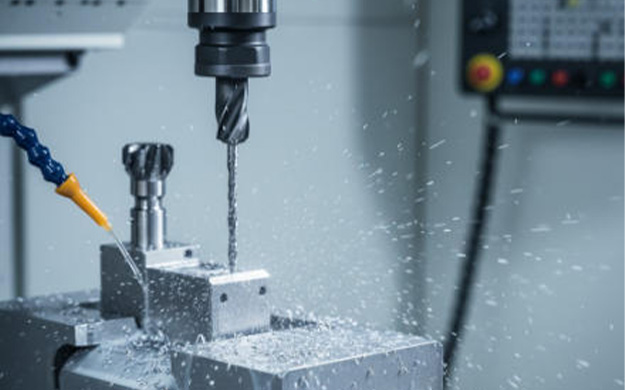Soft machining in CNC manufacturing involves the precision machining of low-hardness materials such as aluminum, brass, copper, and plastics. With optimized soft machining tools and parameter control, it achieves exceptional surface finishes and fast production speeds.
In CNC machining, selecting the right process determines the final precision, surface quality, and cost. Many engineers struggle when choosing between soft machining and hard machining, as the wrong decision can lead to deformation or rough finishes. The soft machining process offers a perfect balance of efficiency, precision, and cost-effectiveness for parts made from softer materials.
Read on to learn about the key materials, tools, benefits, challenges, and applications of soft machining.
What is Soft Machining?
Soft machining refers to the CNC manufacturing process applied to materials with lower hardness and higher ductility. Unlike hard machining, which handles hardened steels and alloys, soft machining vs hard machining focuses on easily deformable materials like aluminum or plastic. It enables high-speed cutting, reduced tool wear, and improved productivity, and it can achieve high-speed cutting, reduce tool wear, improve production efficiency, and provide parts with a high-finish surface.
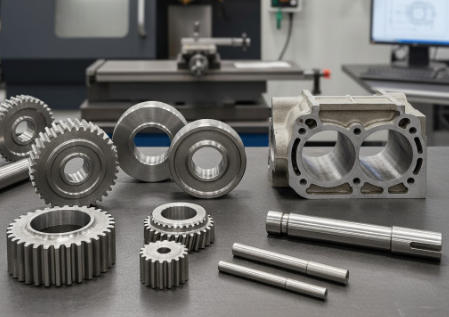
What are the Main Soft Machining Methods?
The soft machining process typically involves CNC milling, CNC turning, and drilling. Each method plays a vital role in achieving the desired geometry, surface roughness, and tolerance.
-
CNC Milling
CNC milling uses multi-axis machining to create detailed and precise components. It removes material layer by layer, ideal for complex shapes requiring tight tolerances. This method is commonly applied in manufacturing electronic housings, optical fixtures, and precision mechanical assemblies.
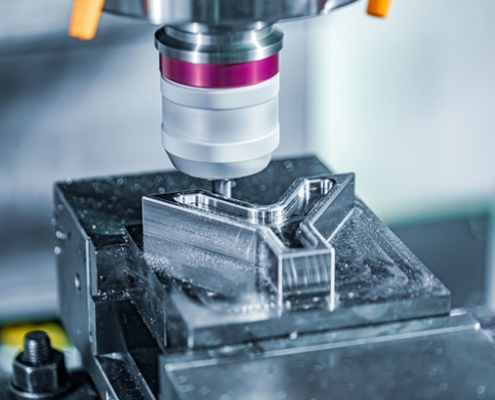
-
CNC Turning
CNC turning involves rotating the workpiece while a cutting tool shapes it. It’s perfect for cylindrical parts like shafts, bushings, and connectors. With its high-speed operation, turning delivers smooth contours and exceptional roundness accuracy.
-
Drilling
Drilling is used to create precise holes, slots, and channels in various materials. It’s vital for automotive, aerospace, and industrial components where accurate positioning and depth control are critical.
What Materials Are Commonly Used in Soft Machining?
Soft machining focuses on materials that are easier to cut and shape while still offering good strength, durability, and surface finish. These materials are often lighter and less abrasive, which helps reduce tool wear and allows for faster machining speeds. Below are some of the most commonly used materials:
| Material | Key Properties | Typical Industry Applications |
|---|---|---|
| Aluminum Alloys | Lightweight, corrosion-resistant, and excellent machinability. Aluminum also dissipates heat well, making it ideal for high-speed cutting. | Widely used in electronics, aerospace, automotive, and consumer products for housings, brackets, and structural parts. |
| Brass & Copper | Offer outstanding electrical and thermal conductivity, with a smooth cutting behavior that produces fine surface finishes. | Common in connectors, sensors, plumbing parts, and decorative components. |
| Engineering Plastics (e.g., POM, Nylon, PTFE) | High wear resistance, low friction, and chemical stability. Lightweight and easy to machine without lubrication. | Used in medical devices, robotics, food processing equipment, and precision mechanical parts. |
| Magnesium Alloys | Extremely lightweight yet strong. Good vibration damping and machinability. | Found in automotive, defense, and aerospace industries, where weight reduction is critical. |
| Zinc Alloys | Easy to machine with good strength and surface quality. Suitable for small, complex components. | Applied in consumer electronics, hardware fittings, and precision instruments. |
| Bronze | Tougher than brass with excellent wear and corrosion resistance. | Used in bearings, bushings, and marine parts. |
These materials were chosen not only for their ease of machining, but also for their balance of strength, cost, and finished product quality. Using the right cutting tools and parameters, VMT’s CNC machine tools can achieve tight tolerances of up to ±0.005 mm, ensuring speed and precision.
What Types of Tools Are Used in Soft Machining?
Soft machining uses tools that keep cuts smooth and accurate while reducing vibration, heat, and material buildup. The following are the main types of tools and features used:
1. High-Speed Steel (HSS) Tools
HSS tools are tough, affordable, and easy to sharpen. They work well for machining soft metals like aluminum and brass, as well as plastics.
2. Carbide Tools
Carbide tools are harder and more durable than HSS. They stay sharp longer and can handle higher cutting speeds. They’re often used in large-scale CNC machining where precision and consistency are important.
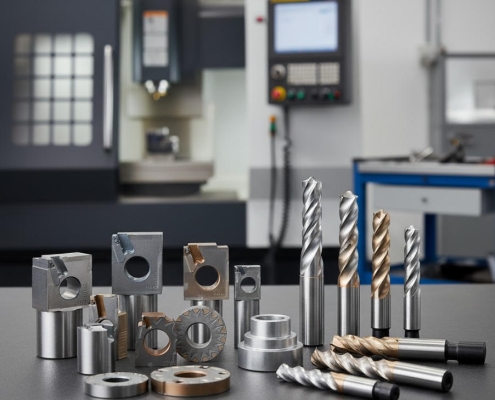
3. Diamond-Coated Cutters
Diamond-coated cutters offer excellent wear resistance and surface finish. The coating reduces friction and prevents material from sticking to the tool, making them great for aluminum, copper, and engineering plastics.
4. Tool Geometry Design
Tool shape is just as important as material. Sharper cutting edges and higher rake angles help make cleaner cuts and reduce material deformation. This design keeps machining smooth and accurate.
5. Coolant and Lubrication Systems
Coolant systems remove heat and chips from the cutting area. They help prevent overheating, protect the tool, and keep the finished part dimensionally stable and smooth.
What Are the Advantages of Soft Machining?
Soft machining has many advantages: it cuts easier, enables the machine to run at higher speeds and other advantages.
1. High Cutting Speeds
Soft materials are easier to cut, which allows machines to operate at higher speeds. This results in faster production cycles and shorter lead times, helping manufacturers meet tight deadlines.
2. Lower Tool Wear
Because soft materials produce less friction during cutting, tools last longer and require less frequent maintenance. This reduces downtime and lowers overall production costs.
3. Excellent Surface Finish
Soft machining can achieve smooth, high-quality surfaces that are comparable to those seen on smartphone casings or precision components. This minimizes the need for additional finishing work.
4. Design Flexibility
The process can handle complex shapes, fine details, and thin-walled parts without causing deformation. It is ideal for prototypes and intricate designs.
5. Energy and Material Efficiency
Machining softer materials consumes less energy and generates less waste. This not only lowers costs but also makes the process more environmentally friendly.
Soft machining combines speed, precision, and efficiency, making it perfect for high-quality prototypes, small-batch production, and lightweight components across various industries.
Common Challenges in Soft Machining and How to Overcome Them
While soft machining is fast and precise, working with soft materials still comes with some common challenges. Issues like material deformation, burr formation, and thermal expansion can affect part quality and consistency. The following are these challenges and effective ways to address them:
| Challenge | Description | Solution / Best Practice |
|---|---|---|
| Material Deformation | Soft materials can bend, warp, or shift during clamping or cutting, affecting part accuracy. | Use stable fixtures and clamps to hold the workpiece securely. Optimize cutting speeds and feed rates to reduce stress on the material. |
| Burr Formation & Poor Edge Quality | Cutting soft materials can produce burrs or rough edges, requiring additional finishing. | Employ sharp tools with proper geometry. Adjust cutting parameters and consider secondary deburring processes if needed. |
| Thermal Expansion | Heat generated during machining can expand the material, leading to tolerance issues. | Use effective coolant systems to control temperature. Minimize cutting forces and allow for material relaxation between passes. |
| Inconsistent Surface Finish | Soft materials may have variable surface quality due to tool wear or process variations. | Regularly monitor tool condition and replace when needed. Use consistent feed rates and cutting speeds. Real-time process monitoring helps maintain quality. |
| Maintaining Repeatability | Achieving the same high precision across multiple parts can be difficult. | Implement statistical process control (SPC), such as CPK ≥ 1.68, to ensure repeatable dimensional accuracy in all CNC machining jobs. |
What Are Soft Machining Applications?
Soft machining is often used in industries that require lightweight, precise and high-quality components. It is able to achieve tight tolerances, smooth surfaces and complex shapes. The following are its wide applications:
-
Automotive
Soft machining is used to produce housings, brackets, dashboard components, and other lightweight parts that require both strength and precision. -
Medical
Surgical instruments, custom fittings, and medical device components benefit from soft machining’s accuracy and fine surface finishes, ensuring safety and reliability. -
Electronics
Components such as smartphone frames, heat sinks, connectors, and sensor housings are commonly made using soft machining to achieve tight tolerances and smooth surfaces.
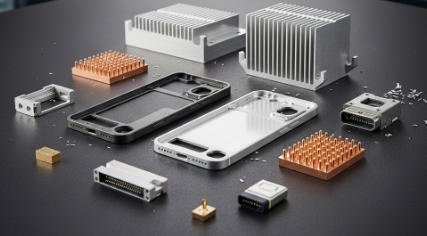
-
Industrial Equipment
CNC-machined sensor mounts, fixtures, and small mechanical parts rely on soft machining for repeatability and precision, which are critical in automation and production systems.
Soft machining enables these industries to combine high precision, repeatable production and excellent surface quality, making it the method of choice for small batches and delicate components.
Start Your Soft Machining Project with VMT
Soft machining is a process that allows fast and precise machining of lightweight and delicate materials while achieving smooth surfaces and tight tolerances.
Our engineers have more than 20 years of experience each. We provide free design support to make sure your parts meet high level surface quality and extremely precise tolerances. Whether you need prototypes or production parts, VMT handles every detail carefully. Start your soft machining project today and see why manufacturers trust VMT for fast, precise, and high-quality CNC machining.
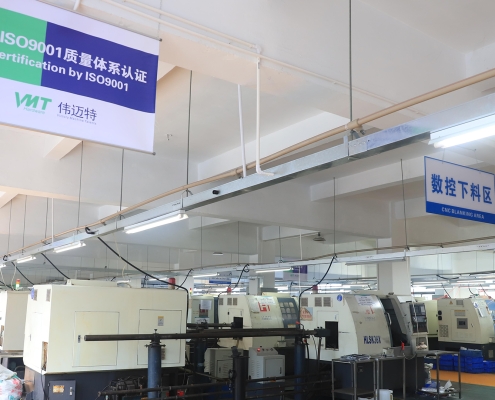
In Conclusion
Soft machining provides speed, precision, and flexibility and has become an essential part of modern CNC manufacturing. With VMT’s expertise, every step of your project is handled with reliability and accuracy. From selecting the right material to achieving the perfect surface finish, we ensure careful attention to detail. Contact us today to get a free quote for your soft machining project.
Frequently Asked Questions
Is Soft Machining Expensive?
Generally, soft machining is more cost-effective than hard machining due to reduced tool wear, faster cycle times, and simpler setups. Costs are mainly influenced by material type, precision tolerance, surface finish requirements, and batch volume. By leveraging efficient production scheduling and in-house finishing, VMT delivers high-quality results at competitive pricing for all soft machining work.
What Is the Difference Between Hard and Soft Machining?
Soft machining is done before heat treatment, when materials are easier to cut. Hard machining happens after heat treatment, on hardened materials. Soft machining focuses on roughing, while hard machining ensures final precision.
Why Is Soft Machining Ideal for Prototyping and Low-Volume Production?
Because of its flexibility and speed, soft machining is a cornerstone for rapid prototyping. It eliminates mold costs and allows fast design validation. For low-volume manufacturing, it offers consistent quality and reduced lead time, which aligns perfectly with the growing trend of customization in product development.

